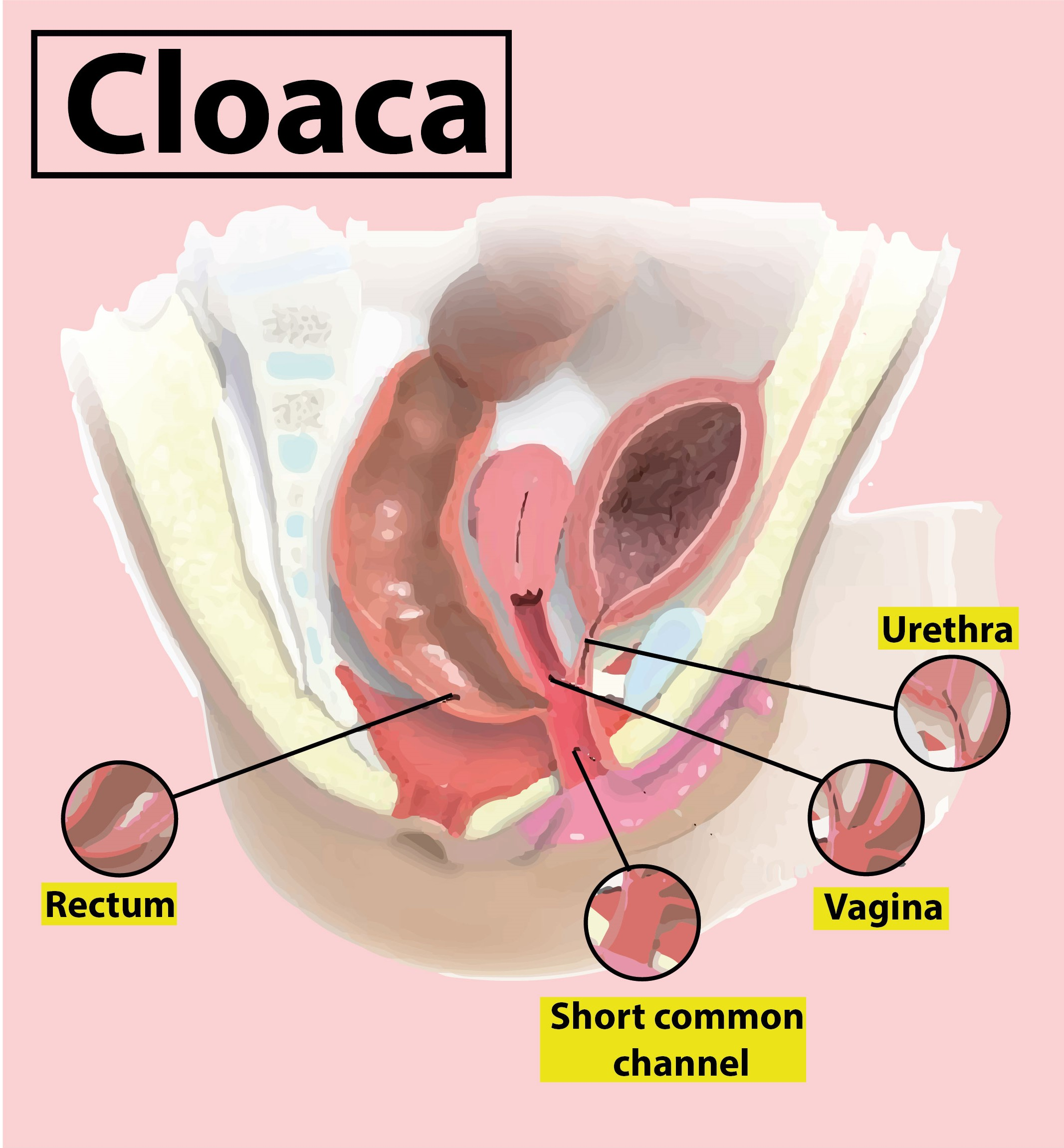
Cloaca is
(a)Common aperture for digestive and urinary systems
(b)Common aperture for digestive, urinary, and reproductive systems
(c)Common chamber in which reproductive, urinary, and digestive tracts open
(d)Common chamber for digestive and urinary tracts
Answer
569.1k+ views
Hint: Cloaca is a small opening present in all the amphibians, reptiles, birds, and a few mammals such as the prototherians. It is a common orifice to many systems of the body and opens to the outside as a small median orifice.
Complete answer:
Cloaca is a common aperture at the end of the digestive tract of an organism for the release of the excretory products but also serves as the opening for urine and the reproductive system. It is seen in vertebrates except for some fishes and most mammals) and certain invertebrates. The word is derived from the Latin verb “cluo” which means "to cleanse”.
Additional Information: In fishes, the true cloaca is only seen in sharks and rays and lobe-finned fishes. In most other fishes, there is a common opening for the urinary and reproductive system, but the anus is a separate opening.
In certain fishes like chimeras, all three openings are separate.
Most mammals do not have cloaca and have a separate aperture for the digestive system. However, some exceptions include the monotremes or the egg-laying mammals and marsupial mammals.
So, the correct answer is, “Common aperture for digestive, urinary and reproductive systems”
Note: -In some animals, cloaca can also have an accessory function in respiration.
-Some turtles that have specialized in diving, are highly reliant on cloacal respiration during dives. -They have a pair of accessory air bladders that are connected to the cloaca which absorb oxygen from the water.
-Some organisms like certain fishes and worms live in a commensal relationship with the sea cucumbers and take advantage of the cloacal respiration exhibited by them.

Complete answer:
Cloaca is a common aperture at the end of the digestive tract of an organism for the release of the excretory products but also serves as the opening for urine and the reproductive system. It is seen in vertebrates except for some fishes and most mammals) and certain invertebrates. The word is derived from the Latin verb “cluo” which means "to cleanse”.
Additional Information: In fishes, the true cloaca is only seen in sharks and rays and lobe-finned fishes. In most other fishes, there is a common opening for the urinary and reproductive system, but the anus is a separate opening.
In certain fishes like chimeras, all three openings are separate.
Most mammals do not have cloaca and have a separate aperture for the digestive system. However, some exceptions include the monotremes or the egg-laying mammals and marsupial mammals.
So, the correct answer is, “Common aperture for digestive, urinary and reproductive systems”
Note: -In some animals, cloaca can also have an accessory function in respiration.
-Some turtles that have specialized in diving, are highly reliant on cloacal respiration during dives. -They have a pair of accessory air bladders that are connected to the cloaca which absorb oxygen from the water.
-Some organisms like certain fishes and worms live in a commensal relationship with the sea cucumbers and take advantage of the cloacal respiration exhibited by them.

Recently Updated Pages
Master Class 12 Business Studies: Engaging Questions & Answers for Success

Master Class 12 Economics: Engaging Questions & Answers for Success

Master Class 12 English: Engaging Questions & Answers for Success

Master Class 12 Maths: Engaging Questions & Answers for Success

Master Class 12 Social Science: Engaging Questions & Answers for Success

Master Class 12 Chemistry: Engaging Questions & Answers for Success

Trending doubts
What is meant by exothermic and endothermic reactions class 11 chemistry CBSE

Which animal has three hearts class 11 biology CBSE

10 examples of friction in our daily life

One Metric ton is equal to kg A 10000 B 1000 C 100 class 11 physics CBSE

1 Quintal is equal to a 110 kg b 10 kg c 100kg d 1000 class 11 physics CBSE

Difference Between Prokaryotic Cells and Eukaryotic Cells




